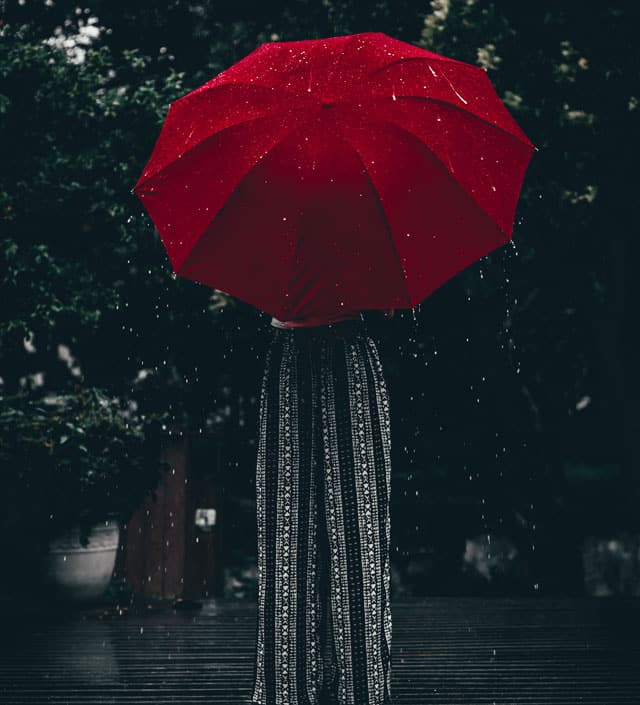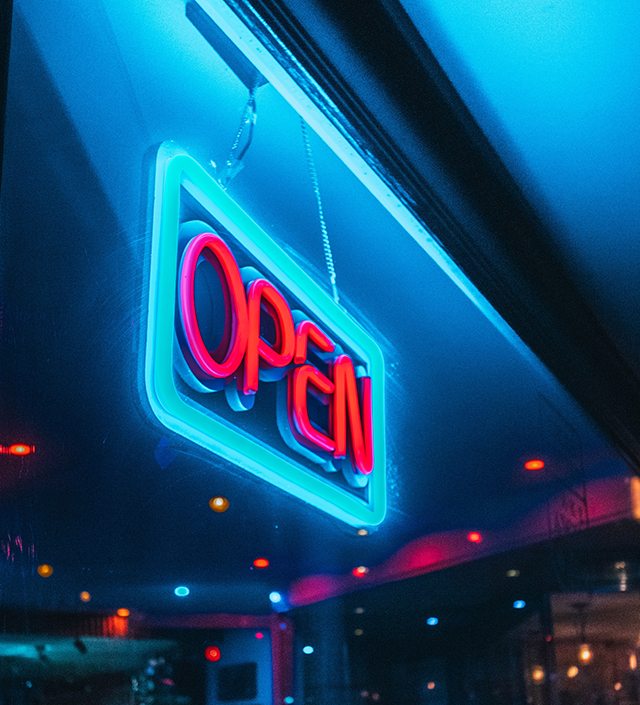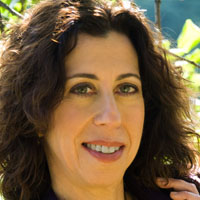
For the fourth time in six years, my husband and I escaped the worst of the East Coast winter, in Southeast Asia. While others in our age group headed south to Florida or the Caribbean, we cashed in on carefully accumulated frequent flyer miles and took off for the other side of the world. Yes, it’s a long way to go, but the sights, amenities and adventures are unrivaled. And pricewise, it’s luxury for less.
Independent travel to that region is part of our 34-year history together. We went to Vietnam, Cambodia and Myanmar during the 1990s, soon after these countries reopened for tourism. Air conditioning was a rarity, so we slept under mosquito nets and burned stinky coils to keep away malaria-carrying insects. Finding bottled water sometimes seemed like a treasure hunt. We front-loaded our adventures assuming, correctly, that as we got older, we’d be less willing to do without creature comforts.
But as we matured, Southeast Asia changed dramatically. Economic development made it possible to return to some of our previous destinations 20+ years later with fewer hassles and better amenities. And the dollar still buys much more there than in the United States. Having made this happy discovery in 2019, and again on the cusp of the pandemic in 2020, during the past two years we have gone for two months at a time.
In contrast with our other travels, where we reside almost exclusively at Airbnbs, for these winter trips we only stay at hotels and eat like locals at small restaurants and street stalls. The high level of service at many lodgings gives us a welcome break from domestic drudgery. We shop for special hotel and regional airline deals, such as those offered during November Black Friday sales. (I do not accept freebies or participate in press trips, and rarely reveal that I am a journalist.)
Our ideal getaway consists of extended stays in small cities interspersed with short hops in larger ones and a couple of splurges at beach- or riverside-resorts. During our most recent two-month journey, we checked into 10 hotels. The shortest visit was for two nights in Vientiane, Laos. The longest was 14 nights apiece in Penang, Malaysia, and Luang Prabang, Laos.
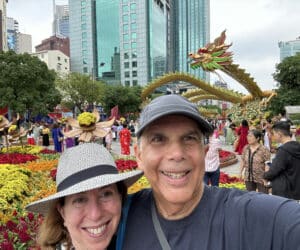
We passed through five countries, entering the region through Singapore, exiting through Bangkok, and spending several days in Ho Chi Minh City during Lunar New Year, known in Vietnam as Tet. We learned the hard way that one must plan where to spend this winter holiday (Chinese New Year). Many places are either crowded with celebrants or closed, as people return to their ancestral villages to be with family. Compared with other locations, Ho Chi Minh City was optimal — extremely festive, with enough restaurants still open that we were not inconvenienced. The boutique hotel we stayed at, Hôtel des Arts Saigon – MGallery, was centrally located and had an intimate feel.
People often ask me how long to spend in a particular location. Unfortunately, there’s no easy answer. I’d rather leave a place wishing I had more time there, than feel eager to depart. We rarely tour all day, preferring to retreat during the midday heat — for a nap, a swim, or so I can write. As snowbirds we have the luxury of time.
Still, we move around a lot, making it essential to pack light. In warm weather one doesn’t need much clothing. Modern technology has replaced paraphernalia we used to carry, like flashlights, alarm clocks and even hard copies of books. Since I write from the road, my suitcase looks a bit like an electronics store, with a laptop, iPad, Kindle, cords, chargers and adapters. Still, on the way to Asia I fit everything into a 22-inch roll aboard, plus a crossbody tote bag. All bets are off coming home, as I deploy a fold-up weekender for souvenirs.
What about laundry? For small or delicate items, a quick rinse with shampoo in a hotel sink does the trick. Otherwise, we look for a nearby laundry service by the kilo or, when the price is right, send it out through the hotel. It’s not always treated with tender loving care though, so we try not to be too attached to any particular item.
My husband, Ken, is fond of saying that most travel advice stems from our mistakes. Each time we tweak the itinerary a bit, based on what could be improved. For those who would like to replicate our approach or are just curious, here’s what we’ve learned from life as Southeast Asian snowbirds.
Plan a Soft Landing for Jetlag
Singapore is the perfect backdrop for the symptoms that Bill Murray portrayed hilariously in the film “Lost in Translation.” The city is relatively compact, with a choice of efficient transportation systems, so there are few hassles getting around. Almost everyone speaks English. And perhaps most important, it’s a foodie’s paradise. The downside is that hotels there tend to be much more expensive than elsewhere in the region.
Having stayed in various neighborhoods dominated by glass and steel, we’ve developed a preference for Telok Ayer, which is part of the historic Chinatown district. Our room this year, at the Ann Siang House, was one of 20 in a restored heritage building, and looked out on a row of old shop houses that have been converted to bars and restaurants.
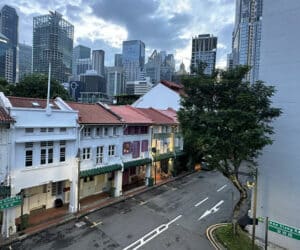
On the main thoroughfares, new pastry shops and coffee bars co-exist with old standbys selling Chinese delicacies like coconut custard cups (Tong Heng, at 285 South Bridge Road) and dried barbecued meats called bak kwa (Lim Chee Guan, 203 New Bridge Road). And the famous Maxwell Hawker Center was so close that we could practically use it as our cafeteria. There I had the best chicken porridge (Zhen Zhen Porridge, stall No. 01-54), and Hainan chicken rice (Tian Tian Chicken Rice, stall No. 10-11) I have ever eaten. We joined the weekday lunchtime crowd at Kok Sen Restaurant (2/4 Keong Saik Road) to slurp up hor fun — fried rice noodles prepared with various mix-ins. Our main exercise was hunting for the whimsical street art by Yip Yew Chong, commemorating scenes of old Chinatown.
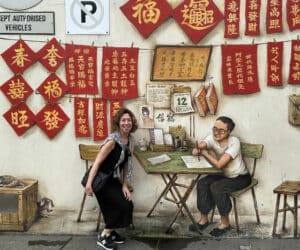
Whether you are spending one night or four (as we did on this trip), proximity to Changi Airport makes this part of the city an easy base. Since our 18-hour nonstop flight from New York arrived at 6 a.m., and the hotel check-in time wasn’t for another nine hours, we opted to pay for an extra night. That entitled us to move in immediately. After a quick shower, we were out on the street in the sunlight, resetting our body clocks by half a day.
Choose One or Two “Hangs”
This is the term we use for locations with comfortable accommodations, good food and sufficient amusement for a stay of up to two weeks. Think of it as immersive travel, or a brief stint living abroad, rather than touring. Anyplace with a large expat population could work. We’ve tried hanging in Siem Reap, Cambodia; Luang Prabang, Laos; and Penang, Malaysia.
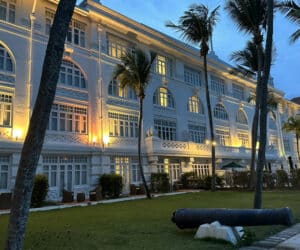
Not surprisingly, we found them all radically changed from our days as more rugged travelers. In Siem Reap, surrounded by Khmer temples, the most famous of which is Angkor Wat, there are many wonderful hotel choices, and a new generation of creative restaurant chefs. But tourism and air pollution have taken a terrible toll on the monuments. Just as dramatically, Luang Prabang, once the province of backpackers and independent travelers, is now overrun with group tours and hulking white vans, straining its infrastructure.
Of the old haunts that we’ve now revisited, Penang offers the best living conditions. We’ve taken up residence three times in the heritage wing of the Eastern & Oriental Hotel, in a garden-level suite with a view of the Straits of Malacca.
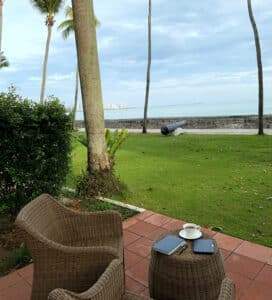
Built along an expansive sea wall in the heart of Georgetown — Penang’s capital city — the E&O, as it’s called, has been a hangout for such literary luminaries as Somerset Maugham, Hermann Hesse and Rudyard Kipling. More recently it has become a winter retreat for Westerners of a certain age looking to escape the cold, dark winter of their primary residences. Many stay there for at least a month, which is twice as long as we do. The staff knows them by name and treats them with compassion and respect.
Privately, we refer to them as “Marigolders.” It’s a reference to the fictitious Best Exotic Marigold Hotel, popularized in the 2011 film of the same name starring, among others, Judi Dench, Maggie Smith and Richard Gere. (The British retirees in the movie and its 2015 sequel travel to Jaipur, India, though filming took place in additional locations.) They can be spotted at the daily breakfast and evening happy hour, included in the room rate, and occupying the same chaise lounge chairs each day around the pool, which overlooks the water.
We crave more activity than that, but it’s easily accessible nearby. The hotel is situated in the UNESCO World Heritage Site, walking distance from shop houses and intriguing colonial architecture. This year, while we were there, I read Tan Twan Eng’s mesmerizing new novel, The House of Doors, set in 1921 Penang. It includes many scenes from the same neighborhood, mentioning street names that have become familiar to me.
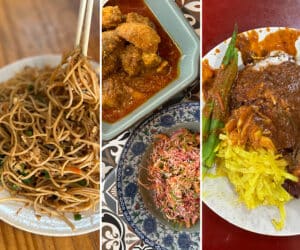
Penang is also heaven for food-lovers, with Malay, Chinese and Indian cuisines well represented in tiny restaurants and food stalls. On each visit we take a cooking lesson with Samuel Tham, a former restaurant chef with a vibrant business teaching tourists and foreign restaurateurs how to make some of the most iconic dishes. We celebrated Chinese New Year last year with him and his wife, Jacqueline Wong, a Penang native. They are our go-to sources for suggestions about what to eat in the city. Our favorites, gleaned from theirs, include Chao Xuan Restaurant, for soups and fried noodles; BaBa Phang for Nyonya (Malay-Chinese) dishes; and Deens Maju for nasi kandar (rice with gravy and an assortment of sides). In a perfect world, we would have friends like Samuel and Jacqueline at each destination.
Talk to Strangers
Everyone we meet, from hotel staff and shop owners, to waiters and other travelers, is a potential source. Some of our best leads to Singapore street food came from the cab drivers who took us from one hawker center to the next. We generally avoid local guides, who routinely get payoffs (politely referred to us “tea money”) from shops and restaurants where they bring tourists. So many times, we’ve observed tired, bored-looking travelers being led around in places they could easily explore themselves. And from what we’ve seen and overheard, most of the spiel could be readily found online, in a brochure, or in art museum captions.
On the other hand, owners of boutique hotels and specialty shops have been invaluable fixers. In Battambang, Cambodia, in February, 2020, the owners of our B&B (now defunct) introduced us to Rotha Khmer, a rice farmer who taught himself English and drives a motorized taxi called a tuk-tuk during the dry season. We spent two memorable days with him on a backroads tour of the surrounding villages.
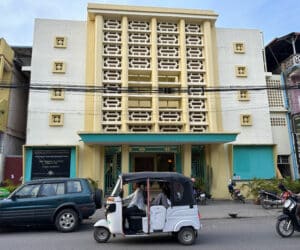
Last year, in Kampot, Cambodia, Pauline Petit, the French-born co-owner of the seven-room Old Cinema Hotel (created in an Art Deco movie theater), curated an extraordinary day at a couple of the area’s many pepper plantations, and arranged tuk-tuk transportation to take us there. The highlight was a home-cooked, three-course vegetarian lunch at Sindora. The owner, Stephane Dawant, is a Belgian architect who first moved to Cambodia in 1996, and ultimately cultivated his pepper plantation on reforested land. His sister-in-law, Keo, who prepared our lunch, sat with us as we ate and talked about how each item was prepared, all from organic ingredients grown on the plantation.
At our request this year, the owners and staff of The Tea House café and restaurant in Luang Prabang went out of their way to arrange a private cooking lesson with their chef. It started with a trip to their organic farm, to harvest lemon grass, guavas and mulberry leaves that we would use in the recipes.
Schedule Resort Interludes
I don’t like the feeling of being captive at resorts, especially because it reduces the choices about where one can eat. Food prices tend to be high, for quality that varies. And at some places staff are relentless about cross-selling the next meal, paid activity or tour. That said, there’s something relaxing and rejuvenating about checking into a place for three-to-five days and having someone else take care of your every need.
If you’re hoping for a pristine beach, be forewarned that a common problem in Southeast Asia is the garbage that washes ashore. At Pangkor Laut Resort, on a 300-acre private island off the western coast of Malaysia surrounded by jungle, I love the overwater villas, arranged to resemble a traditional Malaysian fishing village. But on Emerald Bay, the island’s only beach designated for swimming, the water has a slick, oily appearance, and we observed staff cleaning up all manner of flotsam and jetsam.
We had a similar experience on the Vietnamese island of Phu Quoc, where we’ve stayed for five days, on two separate trips, at JW Marriott’s Emerald Bay Resort & Spa. It has over-the-top interiors designed by the architect Bill Bensley, enormous swimming pools and a tiny crescent-shaped sliver of beach. But even with staff assigned to rake the sand, there was a small quantity of drifting debris each time we took an ocean dip.
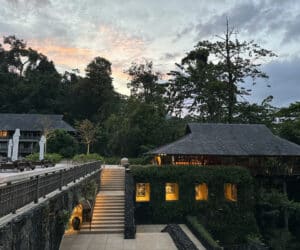
Our best resort splurge, for three days last year and four this time, was The Datai, on the Malaysian island of Langkawi. The rooms are spacious and gorgeously appointed. But the best part is living luxuriously in the jungle. To get to the beach, one walks down a series of stairs through a butterfly garden. (Buggy service is available in both directions for those who can’t go on foot.) The water and the sand are cleaner than elsewhere. At the beach or by the pool, complimentary snacks are delivered throughout the day: fruit kabobs in mid-morning, sorbet at lunch time and cocktails in shot glasses at 4 p.m.
At dinner, there are three restaurants to choose from — we preferred the Thai one. An abundant breakfast, with both buffet and à la cart options, is included in the room rate. No surprise that, here too, there are Marigolders; The hotel offers a discount for returning guests.
Linger During the Lulls
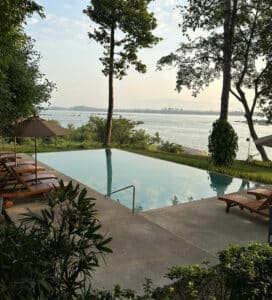
This year we discovered a secluded retreat along the Mekong River that inspired a hack for travels elsewhere: Stay put when others guests depart for activities, and relish the quiet time before afternoon check-ins.
In southern Laos, we did that at The River Resort in Champasak. Our room, on the top floor of a two-unit bungalow, had a spot-on view of the river. Awakened at dawn, we watched small fishing boats glide close to shore as the sun rose. Goats with tinkling bells around their necks grazed on the land below.
We had booked four nights, envisioning the hotel as a base for day trips, most notably to the ancient Khmer temple complex of Vat Phou. But when we arrived at the resort, it was hard to tear ourselves away. Stone paths bordered with fragrant, butterfly-attracting jasmine trees, bright red cane ginger plants and pink-and-yellow-striped parakeet flowers, connect the rooms to public spaces. There’s a small organic herb garden, an orchard of lime trees and paddies that supply the sticky rice served in the dining room. Two infinity pools overlook the Mekong.
So, having seen the sights in two days, on the third we didn’t rush off after breakfast. Instead as others checked out or piled into vans and tuk-tuks for excursions, we spent roughly six hours at what felt like a private resort.
Rely on Hassle-free Transit
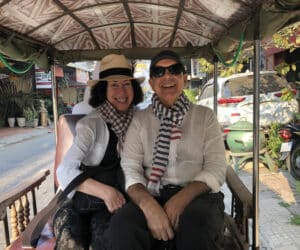
We don’t rent a car in Southeast Asia. Getting around has become much easier, thanks to improved public transit and the emergence of ride-sharing services such as Grab and Loca (in Laos), which operate like Uber. While previously we needed to negotiate with taxi and tuk-tuk drivers trying to rip us off, now we can stand on a street corner in almost any city and use an app to quickly order a pickup. Many airports have stands where you can pay a fixed rate for a taxi to your hotel, thereby avoiding unscrupulous touts. When that’s not available, most hotels offer airport transfers.
For touring, or to get between destinations, we hire a car and driver if we’re not using some other mode of transportation. Most often we enlist our hotel’s help arranging it. Sometimes we invite bids for these long-hauls through a Facebook group, such as Traveling in Laos.
In Cambodia last year, we found a driver through the Facebook group Female Driver in Siem Reap. It led us to Somontha Va, who picked Ken and me up each day in her tuk-tuk, transported us to various temples, and waited for us while we toured. As we emerged from each temple complex covered with dust, she reached into a cooler on the back of her bike and offered us cold water and a chilled towel scented with lemongrass.
Anticipate What-ifs

Except in an emergency, most health insurance (including Medicare) does not pay for medical care abroad. So, I always buy insurance that will cover such expenses and evacuation, if necessary. In Southeast Asia, it’s most likely we’d be transferred to Bangkok or Singapore. The healthcare in both these places is good enough that they have become popular spots for medical tourism.
Last year in Penang when I suspected (correctly) that I had a urinary tract infection, I went to a pharmacy and asked them to refer me to the nearest clinic. As a walk-in patient, I was immediately ushered into the office of an English-speaking doctor. Within 10 minutes I was out the door with a week’s worth of antibiotics, and a bottle of water to take the first dose. Total tab: $10.
Back home, we schedule routine doctor appointments between trips, and aim to start each journey with a clean bill of health. We’re grateful for every winter that we can be Southeast Asian snowbirds. For various reasons, we can’t trek or ride bikes anymore. But we can still traipse around Khmer temples; hoist ourselves out of plastic stools at street food stalls; and weather bumpy rural roads in a tuk-tuk.
I sometimes think about how we could adapt the trip if our physical state declined. Maybe we will become Marigolders. But not yet.
Deborah L. Jacobs, a lawyer, entrepreneur and award-winning journalist, is a former senior editor at Forbes. She is the author of “Four Seasons in a Day: Travel, Transitions and Letting Go of the Place We Call Home” and “Estate Planning Smarts: A Practical, User-Friendly, Action-Oriented Guide.” Join her on Facebook here.




